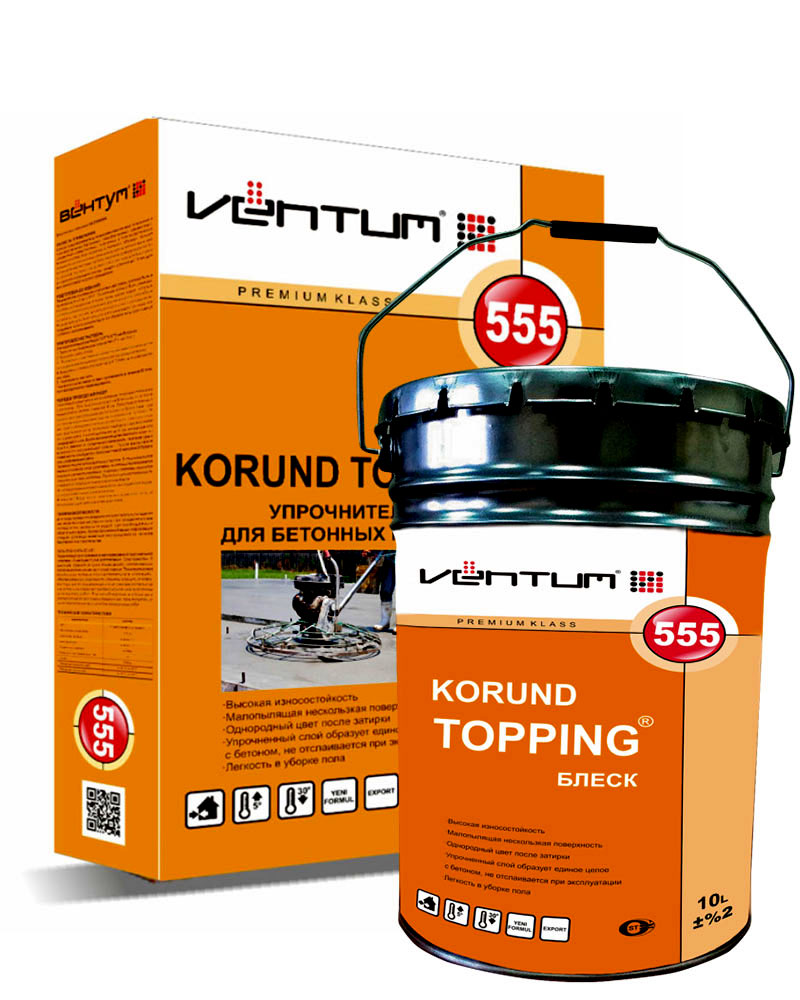
Preparation of the base:
The building shall have a roof, windows and doors shall be closed. The temperature of the base and ambient air during work shall not be below +5°C. At temperatures above +25°C and/or humidity less than 60%, as well as in the absence of protection from drafts and the sun, the top layer of the concrete floor quickly loses water and dries, which will not ensure a high-quality trowelling of the dry mixture. Preparation of the base, type, quantity and arrangement of fittings, concrete class and concrete slab thickness, concrete mix characteristics shall be determined by the project in accordance with the current regulatory documentation and the standard operating procedures. Suitable bases: as-placed (new) concrete of the grade specified in the project, or corresponding to the floor loads. For floors with light and moderate loads, a concrete grade of at least B22,5 is recommended; with heavy loads not lower than B25. Use high-quality concrete mix. The percentage of entrained air in the mixture shall not exceed 3%. When preparing concrete, calcium chloride, salt water and air-entraining additives shall not be used. It is recommended to use fluidifiers in order to reduce the likelihood of shrinkage cracks.
Mortar preparation:
Placement, smoothing and consolidation of concrete. Place concrete in the prepared pattern so that the mark of the “finished floor” is reached. For consolidation of concrete, use an immersion vibrator or a concrete vibrating screed depending on the thickness and method of laying the concrete slab. After compaction, level the concrete surface with the lutes and control rails until the required level is reached.
Concrete pre-trimming:
As soon as concrete begins to bear the weight of a person and a concrete-finishing machine, almost without sinking in, carry out preliminary trimming of concrete with a disk to remove the dried crust of laitance and squeeze water to the surface in order to create a small layer of fresh cement paste. Concrete adjacent to structures, columns, doorways and walls shall be treated primarily because it dries in these places faster than in the rest of the area. Areas inaccessible for machine processing shall be manually regrated with trowels. Before processing, excess water shall be removed from the concrete surface. Initial application of reinforcing agent: apply dry reinforcing mixture (~ 65% of the total flow rate) to the treated concrete surface using special distribution trolleys. Try to achieve a uniform thickness of the reinforcing agent layer. First of all, apply the mixture to areas near walls, columns, doorways and structures, as these areas lose moisture first.
Attention!
It is forbidden to add water and wet the mixture, as this will reduce the technical characteristics of the coating and may cause delamination of the reinforced layer. The first trimming of the reinforcing agent immediately after the mixture absorbs the moisture from the concrete, which will be visible by its darkening, trim with a concrete-finishing machine equipped with disk. Begin trimming near walls, columns, and doorways. Trimming is recommended until a uniformly mixed mixture of reinforcing agent and “cement paste” on the surface. Areas inaccessible for machine processing shall be manually regrated with trowels.